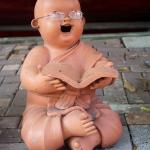The Pew study found that concerns about side effects and how the vaccine works are the principal reasons that 49% o
polio vaccine
It is time to learn a bit about ice cores, those samples of deep ice from our poles
Death knells are beginning to ring for poliovirus. The CDC reports that, in 2014, there were 359 new cases of wild poliovirus in nine countries.
This past Sunday, April 12th, marked the 60th anniversary of Jonas Salk s polio vaccine being deemed safe, effective a




